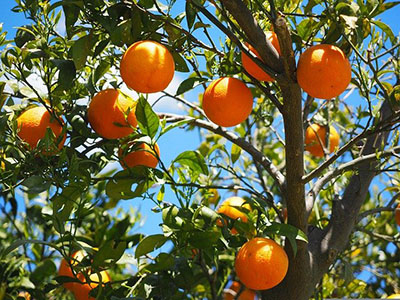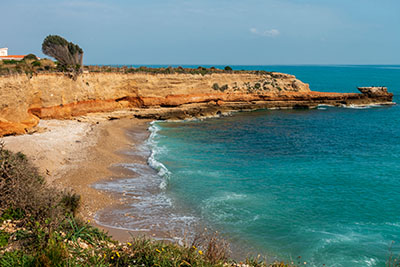They are still hanging from the trees as green balls, but by the end of the month the first ones will be ripe and glowing with the colour that gave these sweet fruits their name: ORANGE.

(Picture from Hans on Pixabay)
No other country in Europe grows as many oranges as the Spanish Mediterranean coast. On more than 300,000 hectares of cultivated land, 5.7 million tonnes of oranges are harvested every year. Orange trees can be found almost everywhere: in the countryside, along roadsides, in the middle of the city and even on the beach.
Orange trees are fascinating plants. These evergreen trees are not only beautiful, they also smell like paradise with their delicate white flowers and bear succulent, juicy fruit.
When the earliest varieties are harvested in October, the fruit still has a strong acidic taste and, in some cases, a green skin. During the season, which lasts until spring, the sweet varieties, which taste so good in freshly squeezed juice, gradually ripen.

(Picture from Bruno Almeida Machado on Pixabay)
A little cultural history…
The first citrus fruits were brought by the crusaders in the 11th century and initially cultivated exclusively for medicinal purposes. Sweet oranges were still unknown at that time.
The first to establish itself was the bitter orange, which was itself already a hybrid, probably derived from the grapefruit and the mandarin. Both varieties, the bitter and the sweet, have the same ancestors in the Himalayan region.
At the end of the 15th century, Italian and Portuguese merchants spread more and more orange trees throughout the Mediterranean region via the Venetian trade routes, and they flourished here thanks to the mild climate.
With the Arabs, the fruit also arrived in Spain under the name "narandsha" via North Africa, where it eventually received its name for the whole world: "NARANJA" the fruit, NARANJO the tree, and its derivative: the ORANGE.
The Moors also quickly fell in love with the tree's flowers, which are still called "azahar" in Spanish, after the Arabic word for white flower. The scent of the orange blossom is captured as an infusion (tea containing no more than twelve dried flowers) and as a distillate, and used as an ingredient in many confectionery products. It is therefore no coincidence that "agua de azahar" is part of every "Roscón de Reyes", the traditional yeast pastry in Spain on Three Kings' Day.

(Picture license from depositphotos)
Gradually, people learned to appreciate the jam made from oranges and their peels and used the base of the fruit to make liqueurs, schnapps and "wines"; today we know the brands Grand Marnier or Cointreau.
The Christians originally had a completely different use for the corrosive juice of the bitter orange. It was a popular cleaning agent, used to clean copper and other metals and even to clean pig intestines before they were used as sausage skins.
In the 16th century, however, sweet oranges, as edible fruit, were increasingly appreciated as a luxury product in wealthy circles. Oranges were now grown in private conservatories called orangeries, in courtyards and gardens.
From around the 17th century onwards, large quantities of oranges were shipped all over the world from the main production areas of Valencia, Andalusia and the Balearic Islands. An industry developed which succeeded in making Valencia and oranges practically synonymous. It is not without reason that the coast north of Valencia is called the "Costa de Azahar“.

(Picture license from depositphotos)
Today, citrus and orange producers in the Valencia region account for more than 60% of the total volume of the Spanish market. 80% of the orange juice consumed in Europe comes from Spain.
Outsiders who have had the opportunity to taste Valencia oranges or who have drunk freshly squeezed juice will notice the difference with the fruit from industrial ripening rooms that are often found in supermarkets in their country.
![]()
(Picture license from depositphotos)
Fancy a drink? Freshly squeezed orange juice is available on every corner here! Come and see us, we would be delighted to invite you for a drink and show you some of our beautiful properties, we have selected a few for you today.
Best regards,
Jan Hannemann and the Su Casita team



